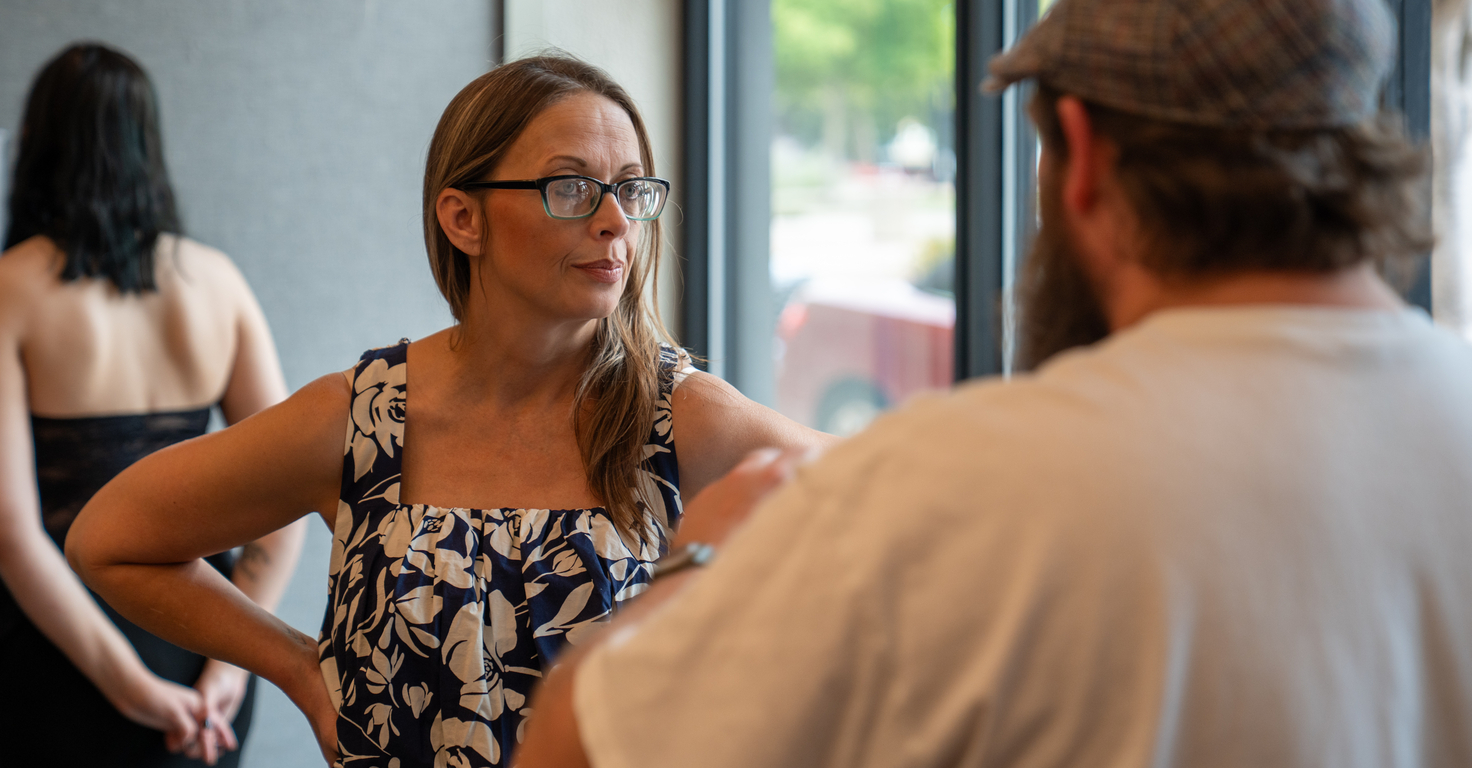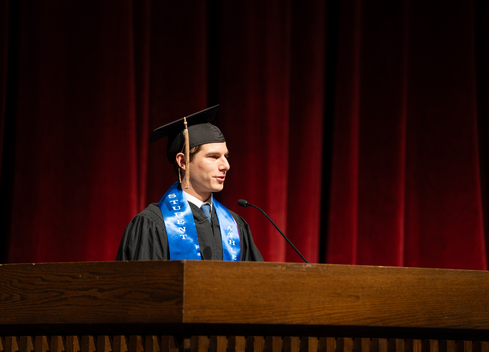DECATUR, Ill. – When Millikin University senior Cristy Proctor stepped into the Robert Crowder Artist Residency, she knew it was an opportunity to take her art to the next level. What she didn’t realize was how deeply the experience would shape both her artistic vision and her future goals.
Originally from Tennessee and now calling Decatur home, Cristy is completing her degree in Art Therapy and is set to graduate from Millikin in December. Her journey to Millikin began at Richland Community College, where she first discovered her love for art.
“I took one art class and realized how much it spoke to me,” Cristy said. “When I learned that Millikin offered Art Therapy, it felt like the perfect way to combine creativity with a career that could make a difference.”
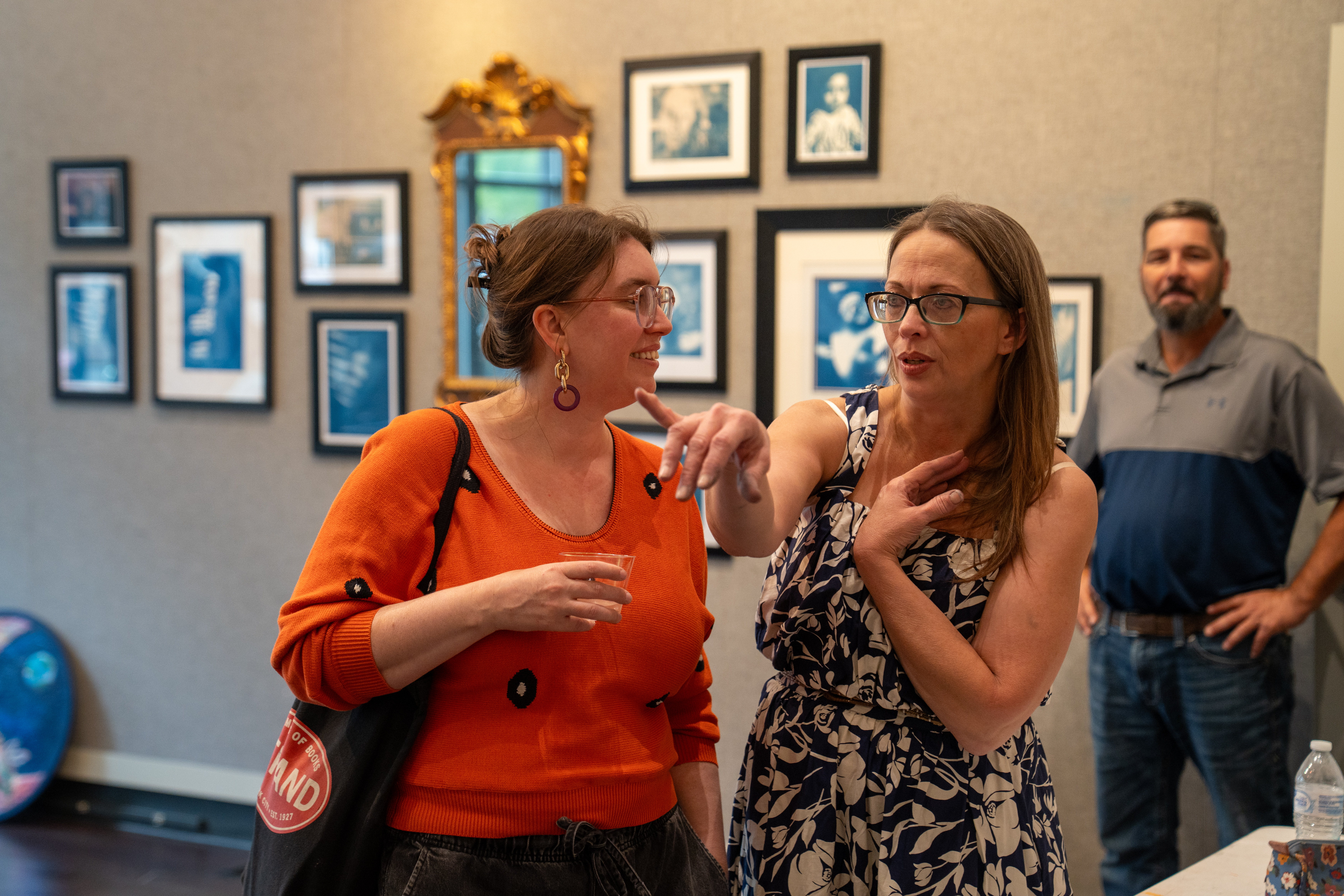
The Robert Crowder Artists Residency is a unique opportunity for Millikin junior and senior art students to fully realize their creative and entrepreneurial potential through the generous support of funding provided by the late Robert Crowder, a member of the Millikin Class of 1933.
Crowder (1911-2010) was from Bethany, Ill., and became a celebrated artist, business owner, and author. He was also an expert in the Byobu style of Japanese painting. The Crowder Gallery is in the Kirkland Fine Arts Center, and its newest exhibit (Oct. 1-Dec. 19) features works done in the Japanese style of painting called Nihonga, which typically uses mineral pigments, and occasionally ink, together with other organic pigments on silk or paper.
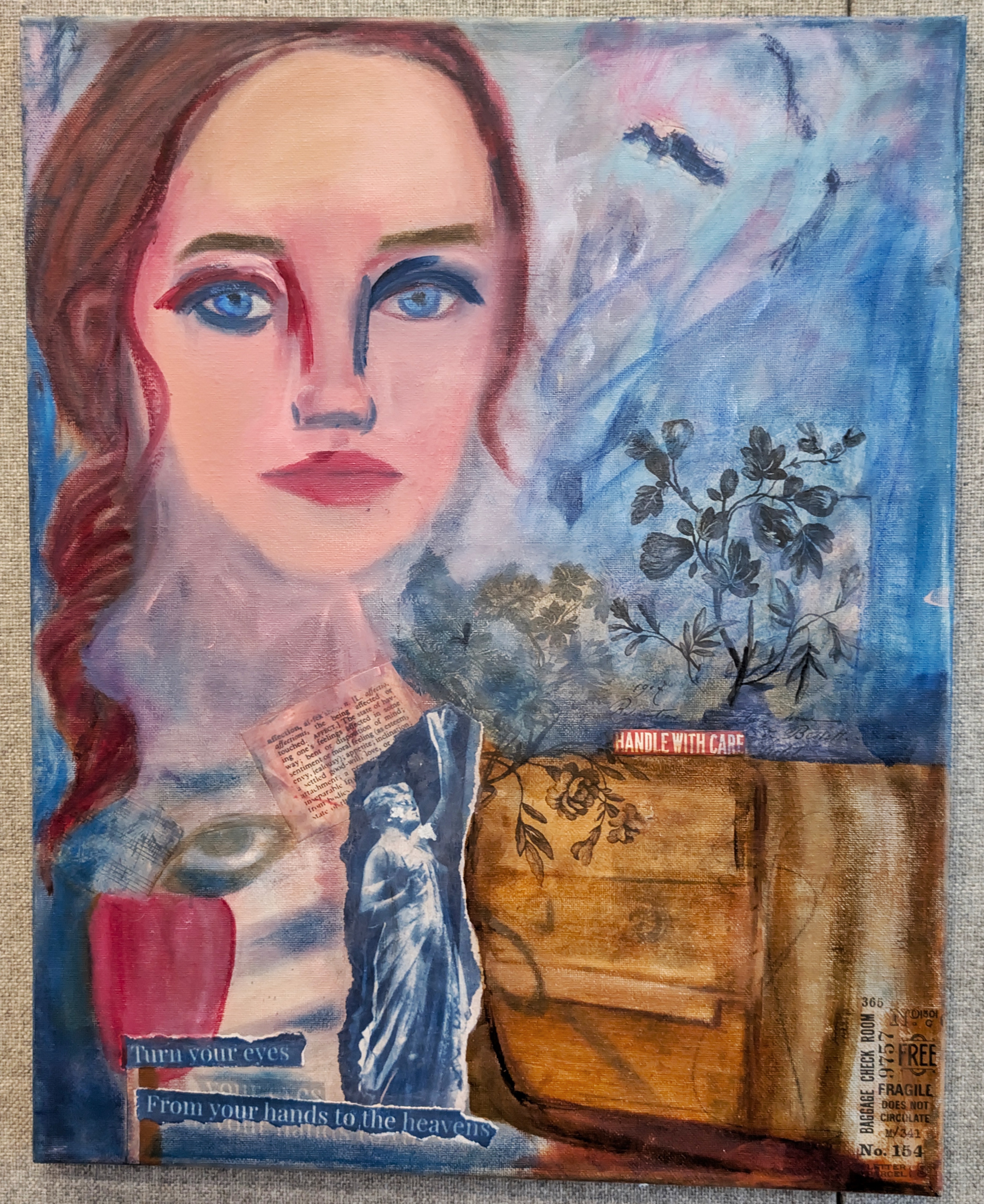
During her residency, Cristy immersed herself in the historic photographic process known as cyanotype, a technique that produces striking blue-toned images once used for early film development and architectural blueprints. She created over 200 prints during the summer, many of which were incorporated into larger mixed-media paintings.
“The cyanotypes really guided me,” Cristy explained. “They felt timeless, like they carried stories and emotions. Each print suggested what the painting should become. It wasn’t me deciding the narrative – it was the cyanotypes telling me what to do.”
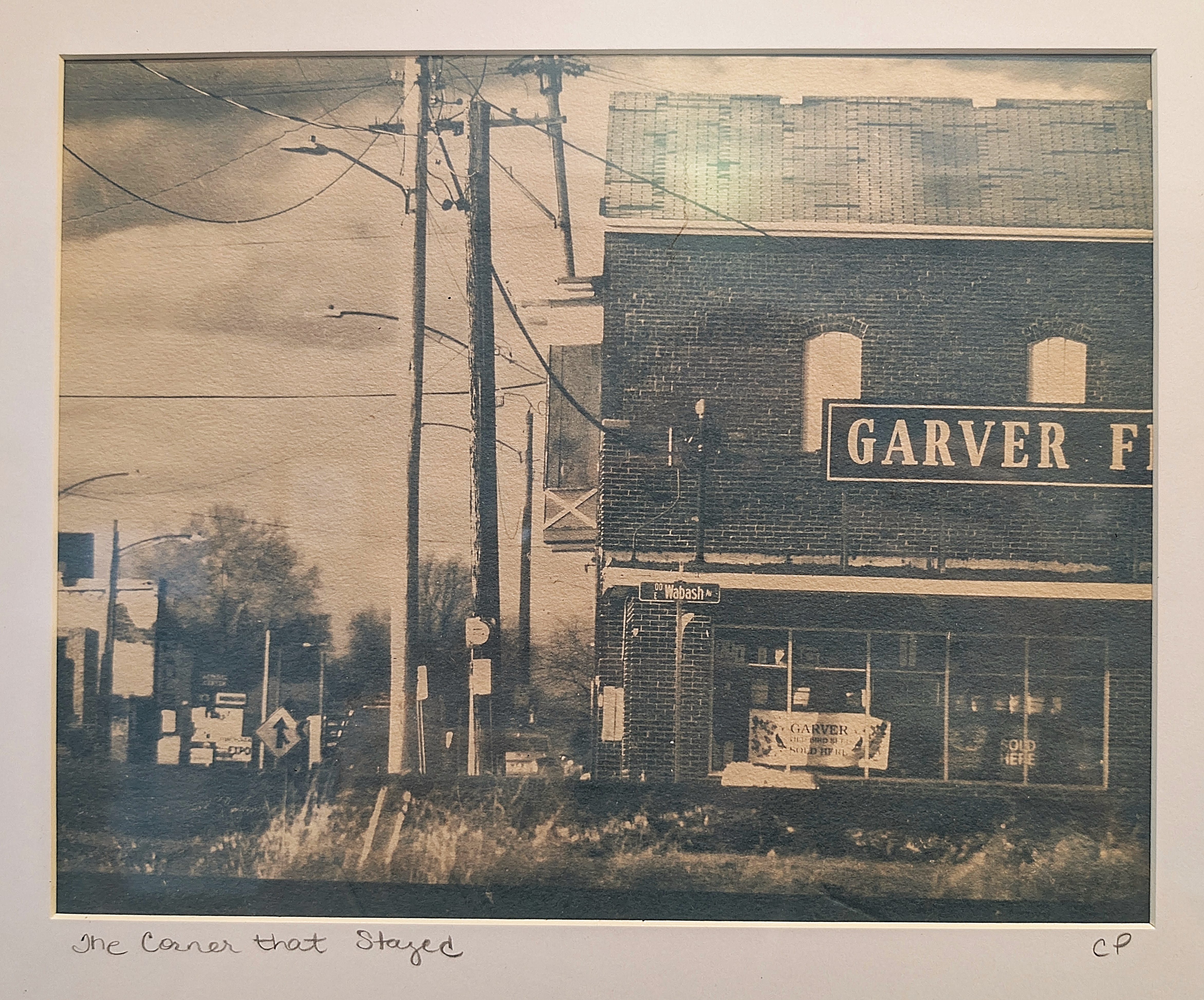
She experimented with altering the chemical process to create a variety of tones, from deep blues to teals, greens, and even purples. Her summer’s work culminated in 11 finished paintings, and she also led a workshop where she taught others about cyanotypes. She shared her work during an exhibition at the Blue Connection Gallery in downtown Decatur on Sept. 5.
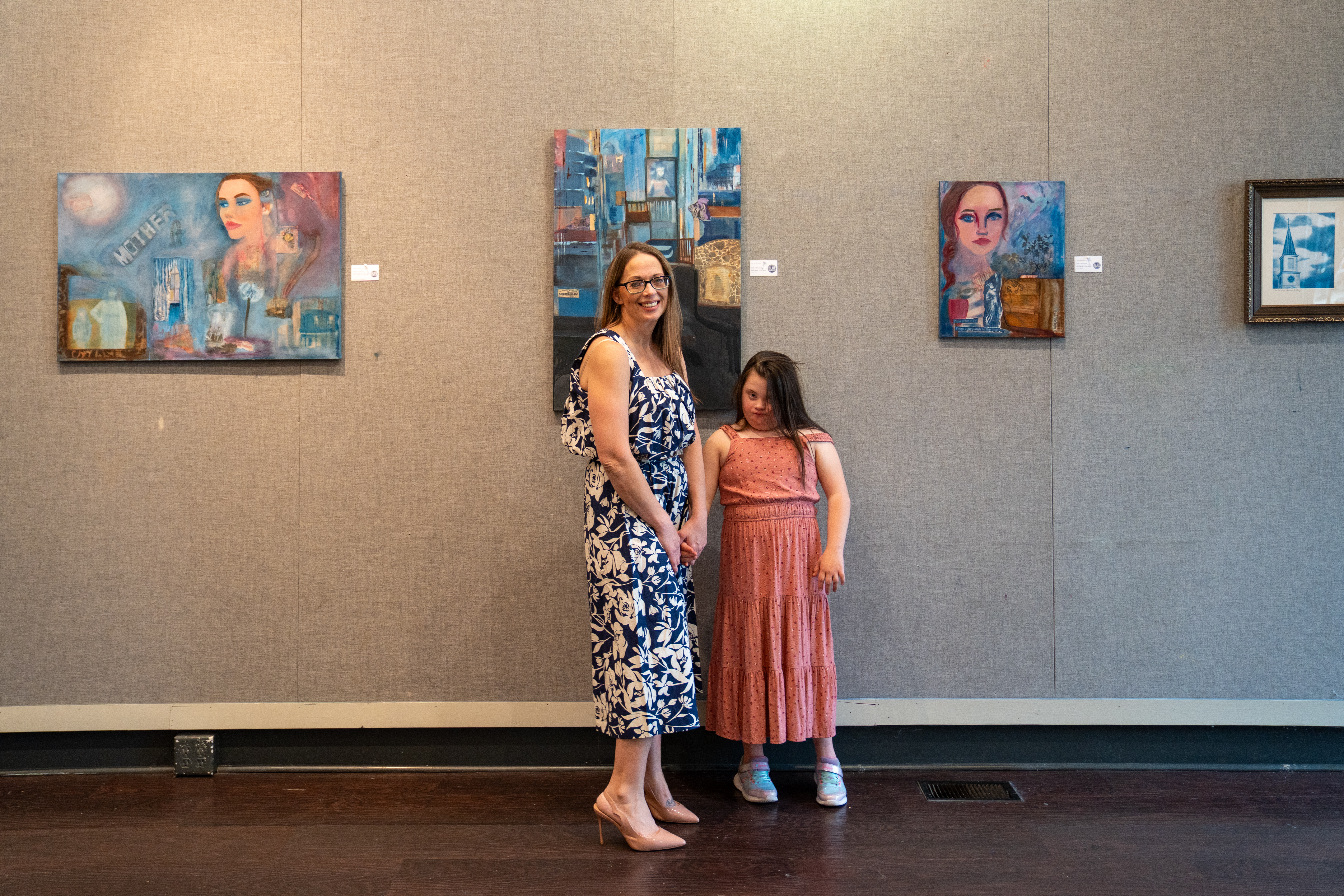
Cristy’s artistic inspiration is rooted in her family, particularly her daughter Izzy, who has Down syndrome. This fall, Cristy will debut her senior exhibition focused on “unmasking” perceptions of Down syndrome, using art to shift the way people view individuals with disabilities.
“Art has the power to change perspectives,” Cristy said. “My daughter inspires me every day, and I want my work to help others see the beauty and value in people with Down syndrome.”
After graduation, Cristy hopes to establish a nonprofit arts center for individuals with special needs, which she envisions calling “Art 3-2-1,” a name inspired by “Trisomy 21,” the genetic condition that causes Down syndrome. Her goal is to create a creative and welcoming space where individuals of all abilities can make art, connect with others, and find a sense of belonging.
“There aren’t enough places for kids like my daughter to go and just be themselves, surrounded by peers and creativity,” Cristy said. “I want to change that.”
Reflecting on her time at Millikin, Cristy says the University has given her the tools to grow as both an artist and an advocate.
“Millikin’s Art Therapy program and opportunities like the Crowder Residency have helped me realize how art can be a catalyst for change,” she said. “I came here because I wanted to make a difference – and I’ve found my purpose.”
